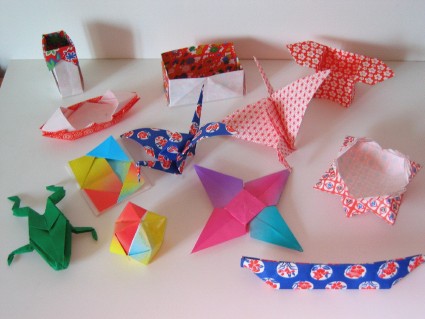

Flower piker
What models should you teach?
Back to the welcome page
First sheet
Previous sheet
Next sheet

|

Flower piker |
|
Frequently Asked Questions What models should you teach? Back to the welcome page First sheet Previous sheet Next sheet |
What models should you teach?
| Several selection criteria can be used: - simplicity of folding o We will use easily identifiable folding techniques, excluding 'acrobatic' techniques such as closed sink. - complexity of the shape o this criterion is very subjective, because it strongly depends on the person's knowledge, and their ability to recognize shapes. - ease of memorization o pedagogical progression is based on the reuse of sequences of folds which will be identified by a name. The first example is the appropriation of the elementary bases. Some folds require many repetitions, like the water bomb. o during learning, we encourage going through 'superfluous' steps, in order to systematically find the same sequence of folds. This is how we only use valley folds, even if it means reversing the fold systematically. We must constantly provide tactile cues. This leads to the use of preparation folds whose sole purpose is to provide precise references. - utility o we are interested in models that can be offered. These can be decorative or utilitarian objects (boxes, vases, containers), flowers, animals. o models that can lead to a social activity are also sought after: making garlands, modular origami, decorative elements. - abstraction o we choose models that are immediately recognizable. In summary, the most important point is the possibility of permanently having tactile markers. You can download an example of content taught to a group of beginners, over two consecutive years |
| Contents | File |
| Assessment of the first year of creating origami teaching for visually impaired people | EnsAVH1Ang.pdf |